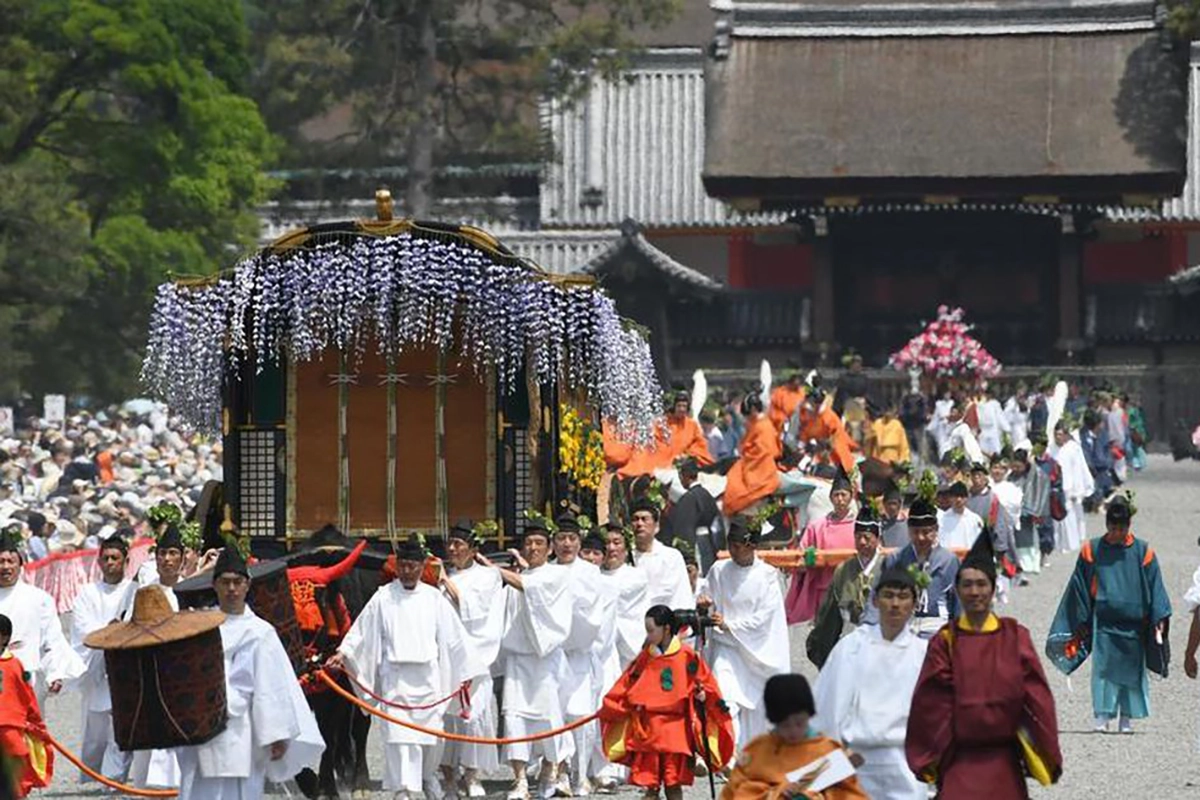Aoi Matsuri: Kyoto’s Grand Hollyhock Festival Celebration
Nestled in the heart of Kyoto, the Aoi Matsuri stands as a testament to the enduring traditions of Japan. This ancient festival, dating back to the 7th century, has evolved into one of the most celebrated parades in the Land of the Rising Sun. With its rich history, vibrant costumes, and vibrant atmosphere, the Aoi Matsuri is a must-experience event for any traveler seeking to immerse themselves in Japanese culture.
A Timeless Tradition
The Aoi Matsuri, also known as the Hollyhock Festival, is not just any festival; it is a living piece of history. The term “Matsuri” originally referred exclusively to this grand celebration, highlighting its significance in Japanese culture. Steeped in tradition, this festival takes place annually on May 15th, drawing visitors from all corners of the globe to witness its grandeur.
A Parade of Elegance
The centerpiece of the Aoi Matsuri is an extraordinary parade that transports you back to Japan’s Heian period (794–1185). Over 500 participants don exquisite aristocratic attire, showcasing the opulence and grace of a bygone era. As they set off from the Imperial Palace, the streets of Kyoto come alive with the vibrant colors and intricate designs of their costumes, transforming the city into a living history book.
The Hollyhock Connection
Aoi, meaning Hollyhock in Japanese, plays a significant role in this festival’s identity. The festival takes its name from the Hollyhock leaves adorning the participants’ attire, symbolizing the deep-rooted connection between the people, the Imperial court, and the Kamo Shrines. These leaves are worn as a sign of reverence and respect to the deities believed to protect Kyoto from natural disasters.
A Journey through Time and Tradition
The Aoi Matsuri’s origins are shrouded in the mists of time. It is said to have started due to natural disasters believed to be caused by the deities of the Kamo Shrines. In response, the Emperor offered prayers and rituals, leading to the quelling of the disasters. This event marked the birth of the Aoi Matsuri, known officially as Kamo Matsuri in honor of the shrines that hold a special place in Kyoto’s history.
The Festival Route
The Aoi Matsuri procession begins its enchanting journey at the majestic Imperial Palace at 10:30 am. As the parade emerges from the southern gate, it winds its way through the ancient streets of Kyoto, heading east and north towards the serene Shimagamo Shrine. This picturesque route offers a glimpse into Kyoto’s historical charm, making it a photographer’s dream.
An Affair of Three Shrines
The journey does not end at Shimagamo Shrine; it continues to Kamigamo Shrine, completing a trifecta of spiritual destinations. The Aoi Matsuri brings these sacred places to life, infusing them with the fervor of the procession. Visitors can immerse themselves in the rituals, dances, and games held at these shrines, including archery competitions and horse races, as the townsfolk celebrate with unbridled enthusiasm.
Experience the Aoi Matsuri
To make the most of your Aoi Matsuri experience, consider opting for paid seating at the Imperial Palace or the Shimagamo Shrine. These prime locations offer an unobstructed view of the procession, allowing you to fully appreciate the intricate details of the costumes and the rich history behind each participant. However, if you’re content with standing along the parade route, you can enjoy the festival for free and still witness its splendor.
In conclusion, the Aoi Matsuri is not just a festival; it’s a living tapestry of Japanese history, culture, and spirituality. As one of the three major festivals in Kyoto, alongside the Gion and Jidai festivals, it stands as a testament to the enduring traditions of Japan. So, if you’re planning a visit to Japan in May, be sure to mark your calendar for the Aoi Matsuri – an unforgettable journey through time and tradition, right in the heart of Kyoto.
